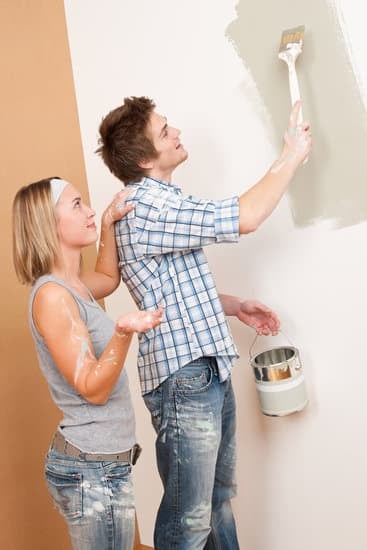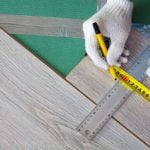Are you a homeowner looking to make improvements to your property? If so, you may be wondering how much in home improvements can you write off on your taxes. Understanding the tax deductions and credits available for home improvements is essential for maximizing your tax benefits and saving money in the long run.
When it comes to tax benefits for home improvements, it’s important to differentiate between a tax deduction and a tax credit. While both can help lower your tax liability, they work in different ways. A tax deduction reduces your taxable income, while a tax credit directly reduces the amount of taxes you owe. Knowing the difference between the two can help you make informed decisions about which home improvement expenses to claim on your taxes.
So, what home improvements are considered eligible for tax write-offs? Understanding which expenses qualify for deductions or credits is crucial. In addition, knowing how to calculate the amount you can write off for these improvements will help you maximize your tax savings. However, there are also limits and restrictions on home improvement tax write-offs that you need to be aware of in order to avoid any issues with the IRS.
Stay tuned as we delve deeper into understanding these concepts and provide tips for maximizing your home improvement tax write-offs. Additionally, we will discuss the importance of documentation and record-keeping when it comes to claiming these expenses, as well as common mistakes to avoid when filing for home improvement tax write-offs.
The Difference Between a Tax Deduction and a Tax Credit
When it comes to home improvements, it’s important to understand the distinction between a tax deduction and a tax credit. A tax deduction reduces the amount of your income that is subject to taxation, while a tax credit directly reduces the amount of tax you owe. This means that a tax credit is typically more beneficial than a deduction, as it directly lowers your tax bill.
For example, if you spent $10,000 on eligible home improvements and receive a $2,000 tax deduction, this would reduce your taxable income by $2,000. However, if you receive a $2,000 tax credit for the same $10,000 in home improvements, this would directly reduce your tax bill by $2,000. In this scenario, the tax credit provides more immediate and substantial financial benefit.
It’s important to note that not all home improvement expenses may qualify for either deductions or credits. Therefore, it’s essential to thoroughly review IRS guidelines and consult with a tax professional to ensure that you’re maximizing your potential savings and accurately claiming eligible expenses for either deductions or credits.
| Understanding | Examples |
|---|---|
| Tax Deduction | Reduces taxable income by total amount claimed. |
| Tax Credit | Directly lowers amount of taxes owed. |
What Home Improvements Are Considered Eligible for Tax Write-Offs
When it comes to home improvements that are considered eligible for tax write-offs, it’s essential to understand what qualifies and what doesn’t. In most cases, home improvements that increase your home’s value, energy efficiency, or accessibility for medical purposes are eligible for tax deductions or credits. These can include renovations such as adding a new roof, installing solar panels, making modifications for disability access, or upgrading your heating and cooling systems.
Another category of eligible home improvements includes those that are necessary for the maintenance and repair of your property. This can encompass repairs to the roof, gutters, windows, and other structural components of the home. However, it’s important to note that aesthetic enhancements or luxury upgrades such as swimming pools or outdoor kitchens generally do not qualify for tax deductions or credits.
Understanding the eligibility of your home improvements for tax write-offs can help you make informed decisions on which projects to pursue. By focusing on improvements that provide long-term value and energy efficiency, homeowners can maximize their tax benefits while enhancing their properties.
| Eligible Home Improvements | Non-Eligible Home Improvements |
|---|---|
| New roof installation | Swimming pool installation |
| Solar panel installation | Outdoor kitchen construction |
| Disability access modifications | Bathroom remodel with no medical purpose |
How to Calculate the Amount You Can Write Off for Home Improvements
When it comes to calculating the amount you can write off for home improvements on your taxes, there are a few factors to consider. Understanding how much you can deduct or claim as a credit for these expenses can help you maximize your tax benefits and save money in the process.
Determine the Cost of Eligible Home Improvements
First and foremost, it’s important to determine the total cost of the eligible home improvements you have made. This includes any expenses related to renovations, repairs, or additions that improve the function or value of your home. Keep accurate records of all receipts and invoices related to these improvements, as they will be necessary when calculating your potential write-off amount.
Understand Tax Deductions vs. Tax Credits
It’s crucial to understand the difference between tax deductions and tax credits when calculating your potential write-off amount. While deductions reduce your taxable income, credits directly reduce your tax liability dollar for dollar. Knowing which category your home improvement expenses fall into will help you accurately calculate the amount you can write off.
Consult a Tax Professional
For more complex home improvement projects or if you’re unsure about how to calculate the amount you can write off for tax purposes, it’s a good idea to consult with a qualified tax professional. They can provide personalized guidance based on your specific situation and ensure that you are taking advantage of all available deductions and credits related to your home improvements.
Limits and Restrictions on Home Improvement Tax Write-Offs
When it comes to claiming tax write-offs for home improvements, there are certain limits and restrictions that taxpayers need to be aware of. Understanding these limitations can help homeowners make informed decisions when planning and executing home improvement projects.
Income Limits
One of the main restrictions on claiming tax write-offs for home improvements is the taxpayer’s income level. Some deductions and credits have income limits, meaning that high-income individuals may not qualify for certain tax benefits. It’s important for homeowners to familiarize themselves with these income thresholds to determine their eligibility for potential write-offs.
Eligible Expenses
Not all home improvement expenses are eligible for tax write-offs. For example, general maintenance and repairs typically do not qualify for deductions or credits. Instead, only specific improvements that increase the value of the property or make it more energy-efficient may be eligible. Examples of eligible expenses include adding a solar energy system, installing energy-efficient windows, or making accessibility modifications for disabled individuals.
Time Limits
Another restriction to be aware of is the time limit for claiming home improvement tax write-offs. In some cases, homeowners may need to complete the improvements within a certain timeframe in order to qualify for deductions or credits. Additionally, there may be specific deadlines for filing these claims with the IRS, so it’s important to stay organized and keep track of all relevant documentation.
As homeowners navigate the process of claiming tax write-offs for home improvements, it’s crucial to understand these limits and restrictions in order to make informed financial decisions and maximize potential savings.
Tips for Maximizing Your Home Improvement Tax Write-Offs
When it comes to maximizing your home improvement tax write-offs, there are several tips and strategies to keep in mind. By understanding the rules and regulations set by the IRS, homeowners can take advantage of potential deductions and credits for their home improvement expenses. Here are some tips for maximizing your home improvement tax write-offs:
- Take advantage of energy-efficient upgrades: The government often provides tax credits for energy-efficient improvements such as solar panels, energy-efficient windows, and insulation. Be sure to check which improvements qualify for these credits.
- Keep detailed records: It’s crucial to keep thorough documentation of all your home improvement expenses, including receipts, contracts, and invoices. Having organized records will help you accurately calculate the amount you can write off on your taxes.
- Consider the timing of your projects: Planning your home improvement projects strategically can impact the amount you can write off. For example, spreading out eligible improvements over multiple years can potentially maximize your tax benefits.
By following these tips and staying informed about tax regulations, homeowners can effectively maximize their home improvement tax write-offs while remaining compliant with IRS guidelines. Taking advantage of available deductions and credits can lead to significant tax savings for those who have invested in improving their homes.
Overall, homeowners should consult with a tax professional or accountant to ensure they are optimizing their potential write-offs and avoiding any common mistakes when claiming home improvement expenses on their taxes.
Documentation and Record-Keeping for Home Improvement Expenses
When it comes to claiming tax write-offs for home improvements, proper documentation and record-keeping are essential. Without the necessary paperwork and evidence, you may find it challenging to support your claims in case of an audit by the IRS. Here are some important tips for documenting and keeping records of your home improvement expenses:
- Keep all receipts and invoices: It’s crucial to retain all receipts and invoices related to your home improvement projects. This includes materials, labor costs, permits, and any other related expenses.
- Document before-and-after: Taking photographs of the areas you’ve improved can help provide visual evidence of the work done. Before-and-after pictures can be valuable if you need to prove the extent of the improvements made.
- Maintain a detailed project log: Keeping a project log that outlines the details of each home improvement project, including dates, costs, contractors involved, and specific work performed is highly recommended.
By diligently maintaining accurate records and documentation of your home improvement expenses, you’ll be better prepared to support your claims in the event of an audit or inquiry from the IRS. It’s also a good practice for keeping track of your overall property maintenance and enhancements.
Remember that when it comes to taxes, thorough record-keeping is always in your best interest as a homeowner seeking potential tax benefits from your home improvement projects.
Common Mistakes to Avoid When Claiming Home Improvement Tax Write-Offs
In conclusion, understanding the ins and outs of tax deductions and credits for home improvements is crucial for homeowners looking to maximize their tax write-offs. It’s important to differentiate between tax deductions and tax credits, as they can have a significant impact on your overall tax liability. Eligible home improvements can range from energy-efficient upgrades to accessibility enhancements, so it’s essential to familiarize yourself with what qualifies for a tax write-off.
Calculating the amount you can write off for home improvements involves careful documentation and record-keeping. Keeping track of all expenses related to the home improvements is key, as it will support your claims during an audit. It’s also important to be aware of any limits and restrictions on home improvement tax write-offs, as these can vary depending on the type of improvement and your specific situation.
To maximize your home improvement tax write-offs, consider consulting with a tax professional who can provide personalized advice based on your individual circumstances. Additionally, avoiding common mistakes when claiming home improvement tax write-offs – such as not properly documenting expenses or incorrectly categorizing improvements – is crucial to ensure that you receive the maximum benefit allowed by law.
By staying informed and proactive in managing your home improvement expenses, you can make the most of potential tax savings while improving your property.
Frequently Asked Questions
Can You Write Off Home Improvements on Your Taxes?
Whether or not you can write off home improvements on your taxes depends on the nature of the improvement and whether it qualifies as a deductible expense. Generally, home improvements that increase the value of your property, like adding a new room or remodeling a kitchen, are considered capital expenses and cannot be written off in the year they were completed.
However, these costs can potentially be factored into the cost basis of your home for tax purposes when you sell it.
Can You Write Off New Flooring on Your Taxes?
Similar to home improvements, writing off new flooring on your taxes also depends on the specific circumstances and whether it can be considered a deductible expense.
If the new flooring is part of a larger home improvement project intended to increase the value of your property, then it may be treated as a capital expense and not eligible for immediate tax write-off.
What Happens if You Don T Have Receipts for Home Improvements?
If you don’t have receipts for home improvements, it may make it more challenging to prove the cost of those improvements to the IRS in case of an audit. While not having receipts doesn’t necessarily mean you can’t claim the expenses at all, it does leave you in a difficult position if asked by the IRS to verify those expenses.
It’s always best practice to keep thorough records of any home improvement expenses, including receipts and invoices.

I’m thrilled to have you here as a part of the Remodeling Top community. This is where my journey as an architect and remodeling enthusiast intersects with your passion for transforming houses into dream homes.





